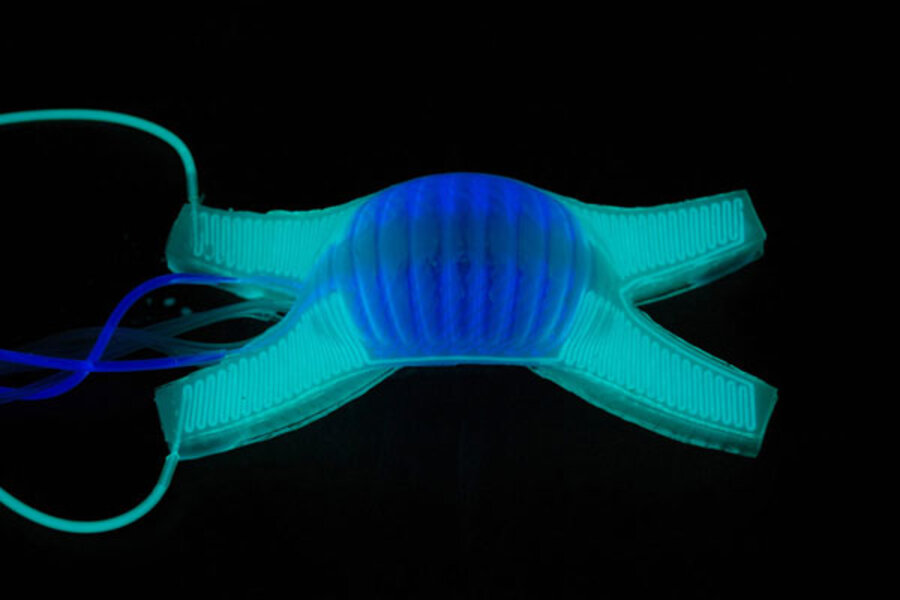Octopuses inspire flexible, crawling, color-changing robots
A newly developed rubbery, octopuslike robot can change colors to hide or stand out in its environment.
Scientists at Harvard have recently begun developing flexible robots from elastic plastics and silicone rubbers that crawl along using compressed air forced in and out of many tiny channels running through its limbs. These soft robots, inspired by creatures such as starfish, worms and squid, can, in principle, squirm through obstacle courses that might prove challenging or impossible for rigid metallic robots.
As researcher Steve Morin, a materials scientist at Harvard University, investigated squid and their properties to help advance soft robots, "I came across a wonderful video of a squid changing colors on the Web," he said. "They are truly fascinating, inspiring animals. We asked if we could replicate some of the functions of the squid, or simpler animals with simpler strategies for camouflage, with these robotic systems."
To make the new four-limbed robot change color, instead of pumping air in and out of its body, they used a separate layer of channels in which they can stream a variety of liquid dyes in and out. With the right combination of colors, the robot can therefore camouflage itself like an octopus does, or signal its presence like a firefly.
[Color-Changing Artificial Muscles Do Camouflage]
"I think it is very surprising that simple micro-channels can be so effective at camouflage," Morin told InnovationNewsDaily. "One does not have to mimic the background to effectively disguise the robot ... simple colors, patterns and shapes can be very effective at camouflage, without mimicking the almost-unbelievable sophistication of some living organisms."
The researchers can also adjust the temperature of the dyes, which can also help the robot blend into or show off its background in the infrared spectrum. This feature was also inspired by nature, given how some snakes can sense infrared light using specialized organs.
Developing the color-changing robot took a year. "This quality is one of the advantages of soft machines — there is very little time between idea and prototype," Morin said.
Although robots that can sneak around like chameleons have a number of obvious devious applications, "we are not just interested in camouflage — we are just as interested, if not more interested, in display," Morin said. "There are many situations where we want soft robots to be very noticeable — search and rescue, for example."
In addition, such robots can help scientists test ideas for how animal disguises and displays work.
"What strategies are effective, what strategies are not?" Morin said.
A current limitation of soft robots is that they run on external air supplies. In the future, the researchers imagine flexible droids that carry their own compressed air and pumps to enable autonomous operations.
In addition, "we would like to move toward more complex microfluidic systems, ones with valves, for example," Morin said. "This direction will allow soft machines to perform more advanced fluid handling procedures, like those that are important for sampling the environment, hazardous sites, places where people do not want to work or it is dangerous for them to work."
Morin, with George Whitesides and their colleagues, detailed their findings in the Aug. 17 issue of the journal Science.
Follow InnovationNewsDaily on Twitter @News_Innovation, or on Facebook.






